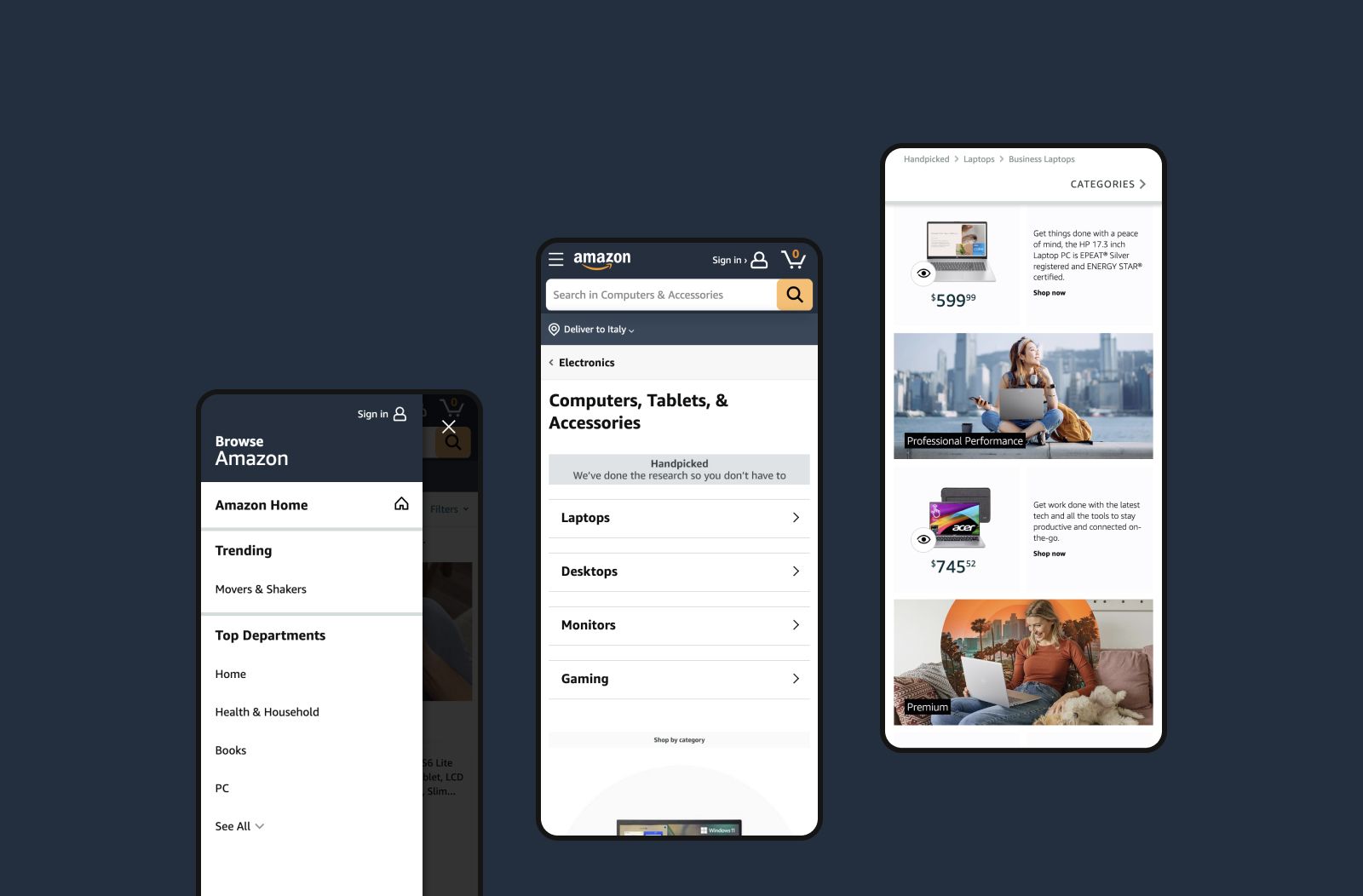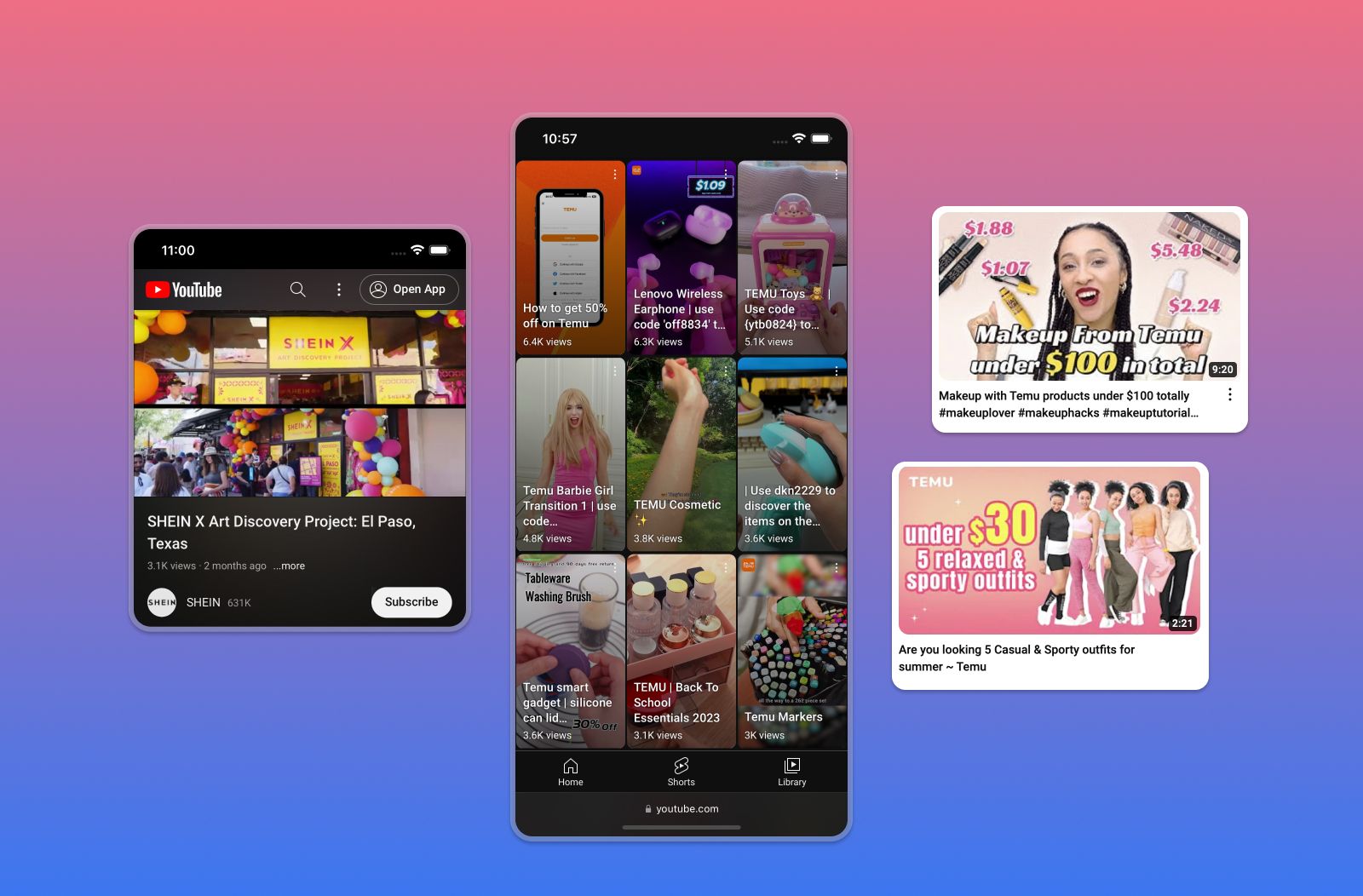In our previous article about cross-cultural design, we delved into the intricacies of crafting online shopping experiences that resonate with diverse cultural backgrounds. We explored how Cross-Cultural Design can be the beacon that guides brands through the complexities of global expansion, emphasizing that a one-size-fits-all approach is rarely practical.
This time, we'd like to focus on a particular design trend that originated in the East and is gaining traction worldwide in specific market segments.
Characterized by busy interfaces and seemingly chaotic information taxonomies, this model stands in stark contrast to the more streamlined, search-centric user experiences we’re used to. Browsing for products is an adventure in and of itself: the shopping journey is akin to a digital bazaar, buzzing with energy, and each click leads to unexpected finds.
This trend has a name—it’s called shoppertainment—and it’s being popularized in the West by Chinese e-commerce marketplaces such as Shein and Temu.
Today, we’ll look at what shoppertainment is exactly, why it works so well, and what lessons we can learn from its most prominent adopters.
How Shein and Temu Drive Customer Engagement through Shoppertainment
Temu, pronounced “tee-moo,” is an online superstore for virtually everything—from home goods to apparel to electronics—that made its Super Bowl debut in 2023.
Temu encourages consumers to “shop like a billionaire” and offers products at surprisingly low prices. It has quickly become the most downloaded app, surpassing rivals Amazon and Walmart, not just in the United States but in the entire world.
With low prices and cluttered design, the personalized and gamified shopping experience Temu offers has drawn comparisons to Shein, the Chinese fast fashion upstart that also offers a wide selection of inexpensive clothing and home goods and has made significant inroads into several markets, including Europe and the United States.

Shein and Temu have both burst onto the scene in an online-first, fast-moving world. Through social media, influencer partnerships, live-streaming events, and a hefty reliance on performance marketing, they've created a strong brand presence that resonates with their target audience, often overshadowing the more sober, utilitarian approach of marketplaces like Amazon and Walmart.
When exploring the user experience design of platforms like Shein and Temu, it becomes evident that they foster an overwhelming sensory experience.

The interfaces of these platforms are a collage of vibrant colors, animated elements, and interactive features that aim to captivate and retain user attention. It's a digital landscape that's always in motion, with pop-ups, limited-time offers, and an endless stream of personalized recommendations designed to evoke the same excitement and urgency one might feel in a bustling street market.
Compare this with Amazon's more conservative approach, where functionality and efficiency are the cornerstones. Amazon's clean and practical design focuses on the ease of finding products through a logical and orderly user interface.

These differences mirror broader cultural preferences that Temu and Shein lean heavily into and have managed to “export” outside their original cultural context.
High-Context vs. Low-Context Cultures and their Impact on Design
In high-context Eastern cultures, where communication is often layered and nuanced, the sensory-rich UX design of Shein and Temu does not overwhelm but rather speaks a familiar language.
Furthermore, the digital journey took a mobile-first trajectory in the East, with the majority of the population experiencing the internet for the first time through the screens of their phones rather than desktop computers. This has profoundly influenced how online services, including e-commerce, have evolved in these regions.
Let’s think about Alipay and WeChat, platforms offering a comprehensive range of services from bill payments and banking management to taxi bookings and shopping. For super app users, the process of purchasing a luxury handbag within the same platform used for everyday tasks like paying utility bills is seamlessly integrated, reducing cognitive dissonance.
Conversely, in the more conservative and low-context West, Amazon's streamlined approach aligns more closely with communication preferences. The marketplace's structure and navigation are built for efficiency, offering a controlled space that prioritizes the straightforward discovery and purchase of products. Amazon's interface is a testament to the low-context communication prevalent in Western culture, where explicit messages win the day.
And yet, despite the cultural nuances, shoppertainment-centric platforms like Temu and Shein continue to gain traction in the West. What gives?
The Appeal of Shoppertainment Across Cultures and Generations
As mentioned earlier, Temu and Shein embrace the delight of discovering treasures in a bustling marketplace. The success of these platforms lies in their mastery of discovery-based commerce. They blend AI with an understanding of user behavior to create a personalized and gamified shopping environment. Influencers, social proof, and live-streaming events further enrich this landscape, transforming the act of purchasing into an engaging and social event that feeds on the innate human love for exploration and deals.
Interestingly, this “shoppertainment" model resonates particularly well with Western Gen Z consumers, who are more adaptable to innovative, if less polished, user interfaces. Their shopping habits are motivated by value and the excitement of discovery rather than the aesthetics of the shopping platform. The loud and lively Y2K stylings, playful interactions, and immersive content that dominate these sites speak the language of a generation that craves authenticity and spontaneity over polish and predictability.

Temu and Shein continue to rise in popularity, and not just with Gen Z. There’s another significant factor contributing to this phenomenon.
While Gen Z may be at the forefront of embracing energetic and interactive digital storefronts, the economic draw of these platforms speaks to the universal appeal of consumerism. Older generations, too, find the cost savings compelling enough to venture into these more animated shopping environments, suggesting that the desire for value can sometimes supersede preferences for a more traditional and subdued browsing experience.
As such, Shein and Temu have tapped into a powerful vein within the consumer market, demonstrating that while the 'shoppertainment' model might be vital to capturing the hearts of younger users, the fundamental drive to consume at the best possible price is a widespread motivator that crosses generational and cultural boundaries.
Is Global E-Commerce Moving Toward Shoppertainment?
Temu and Shein have not just pioneered the 'shoppertainment' model; they've excelled in it, capturing the hearts of a broad audience with their gamified, discovery-driven approach to commerce. Their success lies beyond competitive pricing or extensive inventories, and it’s rooted in a shopping experience that equally prioritizes entertainment and acquisition.
Looking ahead, the trajectory of e-commerce design might be steering towards a hybrid model. Incorporating personalized and interactive elements typical of Eastern consumer experiences without compromising the organized simplicity that users appreciate in the West will be critical to the continued success of our domestic marketplaces.
As such, the next challenge in e-commerce design will be to create experiences that resonate not just with a medley of cultural preferences but also with the varied tastes of an international, multi-generational audience.
If you have any questions about shoppertainment or want to understand which principles you can apply to your brand, feel free to reach out–we’d love to chat!



